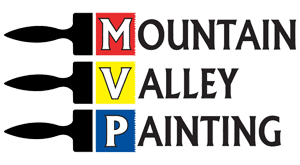Painting wood isn’t always as simple as it may seem. Painting projects can already be a complicated task to tackle. Certain surfaces can prove to be even more difficult. Wood surfaces for example can require added steps to ensure a smooth outcome. To paint trim, baseboards, furniture or any wood surface you will want to do it right the first time so you don’t have to strip it down and try again, risking damage to that expensive wood. Let’s get started.
Step 1: You will need to tape off the area to ensure paint only goes where you want it and doesn’t seep into any surrounding areas you do not want painted. Drop cloths or protective tarps will also need to be used to protect the floor from unwanted splatters or drips.
Step 2: Make sure you are protecting yourself. Prepping wood could pose risk to your skin, ears, eyes and even your lungs. Make sure you have proper protection such as a respirator mask, eye and ear protection and rubber gloves. Long sleeves are also useful to keep splinters from finding their way to your skin.
Step 3: Do not skip the prep. Going straight to the first coat of paint without the necessary prep will cause the paint to peel away from the wood. Fix all damage before you begin. Holes, scratches, splits or dents can be filled with wood putty. Make sure it is a compound that can be painted and it is completely dry before sanding to an even surface. After area is fixed sand all surfaces to be even and smooth. Remove all dust after sanding.
Step 4: Clean the wood surface thoroughly. To ensure primer and paint adhere correctly they will need to be applied to a clean surface. Wipe the surface with a soft cloth and water an allow to air dry completely. Painting while still damp can cause blistering paint or worse yet, mold to grow under the paint ruining the wood and causing potential health concerns. Mold looks black when wet, if you notice any, correct this with products special for the removal of mold found at your hardware store.
Step 5: Now it’s time for primer. Apply primer with either a roller or brush (depending on the size of your project) an allow to dry entirely. Apply a second coat if primer is translucent. Again allow to dry entirely.
Step 6: After primer is entirely dry, take a scuffing sponge or sandpaper and lightly go over the entire area. Scuffing allows paint to stick to the surface in a uniform manner and bond correctly. Remove all dust after this step, again clean walls hold paint better.
Step 7: Now it’s time to paint. Apply paint with the grain for a smoother appearance. Allow the first coat to dry, repeat the scuffing and dusting step and apply the second coat of paint the same way you did the first. Make sure to properly store your paint and materials.
Presto! You are done! Last step is to enjoy the beauty of your hard work. If done correctly, your project should remain looking good for years to come. If you decide your walls, trim, doors or exterior wood is more work than you want to tackle alone, the professionals at Mountain Valley Painting are experts in getting wood painted perfectly. Call today for a free estimate. 801-865-9987

